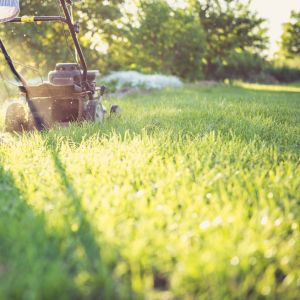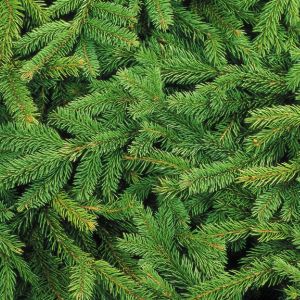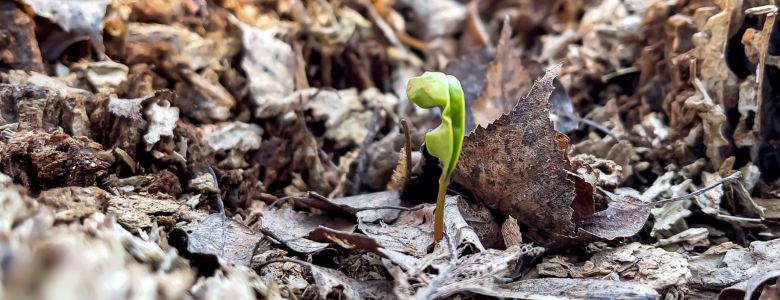You’ve probably encountered mulch in various landscaping settings, like flower beds, gardens, and pathways. But did you know that you can also use mulch to fertilize your lawn? Organic mulch can break down over time, providing essential nutrients to your grass. The best part is that you can either create your mulch at home or easily purchase it. In this user-friendly guide, we’ll explore the benefits of mulch fertilizer for your lawn and provide insights into the types of mulch you can use.
Understanding Mulch
First things first, what exactly is mulch? Mulch refers to any material, organic or inorganic, applied to the soil’s surface to enhance or protect it. For instance, mulch can conserve moisture and prevent weed growth.
Organic Mulch: Made from biodegradable plant-based materials such as grass clippings and leaves.
Inorganic Mulch: Comprises materials that don’t decompose, such as rocks or landscape fabric. While it may not benefit your lawn, it has decorative and growth-control uses, especially around ornamental plants.
Organic mulch offers unique advantages, primarily because it breaks down and enriches the soil with nutrients. This makes it an excellent choice for lawns as it can provide benefits without impeding or restricting turf growth when used correctly.
Mulch vs. Fertilizer
Let’s clarify the difference between mulch and fertilizer. While both contribute to plant health, they serve distinct purposes.
Fertilizers: These substances, which can be organic, inorganic, natural, or synthetic, supply essential nutrients for plant growth. Fertilizers directly enhance plant nutrition.
Mulch: While some mulch types can act as fertilizers by providing nutrients, not all mulch serves this purpose. Mulch can also be purely decorative or used to inhibit weed growth.
Types of Grass Mulch
Now, let’s explore five organic mulch options that break down and supply nutrients to your lawn:
Mowed Grass
Easily mulch your lawn by mowing it with a mulching lawn mower, which cuts the grass into small pieces.
Ensure that the cut length remains at 1 inch or less, which is more achievable with regular mowing and not removing more than one-third of the grass blades.
Contrary to the misconception that lawn mowing contributes to thatch formation, mowed grass decomposes rapidly and does not cause thatch. Thatch results from the accumulation of living or dead roots, shoots, and stems on the surface, not mowed grass.
Only avoid using mowed grass for mulching if it’s too long, wet, clumped together, or diseased.
If you have excess clippings, consider using them as mulch for other plants in your yard. However, avoid doing so if you’ve recently applied herbicides or pesticides, as they may not be safe for other plant types.
Note: Properly dispose of excess clippings to prevent potential negative effects on water quality, such as clogging curbs, gutters, and storm drains.
Advantages:

- Easy to execute.
- Rapid decomposition.
- Reintroduces nutrients like nitrogen, phosphorus, and potassium into the soil.
- Enhances soil texture and quality.
- Increases organic matter in the soil.
- Reduces weed growth.
- Retains moisture.
- Moderates soil temperature.
Disadvantages:
- May not be visually appealing.
- Limited compaction resistance.
- Potential for disease spread.
- Ineffective on long or wet grass.
- Incompatible with mowers lacking a mulching attachment.
- Clippings in gutters or storm drains can harm water quality.
- Clippings may contain weed seeds, potentially spreading weeds across the lawn.
Shredded Leaves
Instead of raking up fallen leaves, use a mulching mower or shredder to mulch them into smaller pieces.
Different plant leaves may have varying effects on the soil. For instance, oak and beech leaves are acidic and can influence soil pH as they decompose. Most grass varieties thrive in soil with a pH level between 6 and 7.
Compost not only reduces waste but also enriches your lawn and other plants with nutrients. You can purchase compost if you prefer not to make it yourself.
Advantages:
- Improves soil structure.
- Enhances water retention and nutrient-holding capacity in sandy soils.
- Improves drainage in heavy clay soils.
- Suppresses weed growth.
- Regulates soil temperature.
- Recycles kitchen waste.
- Reduces the need for chemical fertilizers.
- Rapid decomposition upon application.
- Slow nutrient release to prevent fertilizer burn.
- Protects plant roots.
- Prevents diseases.
- Decreases the need for aeration.
Disadvantages:
- Attracts wildlife.
- May emit odors.
- Requires time to decompose before use.
- Less effective at weed suppression compared to other mulch types.
- If you intend to use compost on areas other than your lawn, such as a vegetable garden, avoid using chemically treated grass clippings, as the chemicals may not be safe for other plant types.
Pine Needles

If you have pine trees in your yard, consider using fallen pine needles as mulch for your lawn.
Crush the needles with a shredder or add them to your compost pile.
If opting for composting, ensure that pine needles constitute less than 10% of your compost heap.
While pine needles are acidic when they fall from the tree, their acidity neutralizes as they decompose. Their impact on soil pH during use is typically negligible.
Advantages:
- Economical or free.
- Visually appealing.
- Stays in place.
- Allows easy penetration of air, water, and nutrients.
- Pleasant aroma.
- Excellent compaction resistance.
- Long-lasting.
Disadvantages:
- Fire risk.
- Thick layers may impede moisture penetration.
Straw
Straw serves multiple purposes and can also be used as mulch for lawns and other landscaping projects. It is particularly well-suited for newly sown lawns.
Straw is readily available and cost-effective but should be sourced from a reputable supplier.
Keep in mind that straw might contain weed or grain seeds that can sprout on your lawn, affecting its appearance.
Advantages:
- Easily obtainable.
- Inexpensive.
- Ideal for newly seeded lawns.
- Good compaction resistance.
- Regulates soil temperature.
Disadvantages:
- May contain weed or grain seeds.
- A thick layer can provide shelter for pests.
- A thin layer may blow away.
- Rapid decomposition necessitating frequent replacement.
- Highly flammable.
- May not be visually appealing.
When to Apply Mulch
It’s best to apply mulch early in the growth stages, either before weed germination or right after planting new grass. This allows your lawn to maximize nutrient utilization while preventing weed growth.
How Much Mulch to Apply
Avoid completely covering your grass with mulch, as you still want it to be visible and not suffocate the lawn. If you’re already using your lawn mower, leaves, or pine needles as mulch, ensure you don’t overapply. If the mulch layer appears to choke the grass, consider using a mulching mower if the grass clippings or other plant material cover less than 50% of the lawn. If they cover more than 50%, you may need to bag or repurpose them elsewhere.
For compost as a topdressing, a 1/4-inch layer is typically sufficient. When using straw mulch, use one bale of straw for every 1000 square feet.
Benefits of Mulch Fertilization
Fertilizing your lawn with mulch offers numerous advantages, including:
- Reducing the need for additional fertilizers.
- Preventing moisture evaporation.
- Decreasing weed growth.
- Maintaining moderate soil temperatures.
- Providing erosion protection.
- Limiting the spread of soil-borne diseases.
- Enhancing soil structure.
- Preventing surface soil hardening, which inhibits water absorption.
- Mitigating soil compaction.
- Promoting root growth.
- Benefiting earthworms and soil microbes.
A Few Tips for DIY Mulching
If you decide to embark on a DIY mulching adventure to save time and money by repurposing yard waste, keep these tips in mind:
- Avoid overapplying mulch, as excessive amounts can suffocate your grass, hindering the passage of air, water, and nutrients to the soil.
- Regularly turn over stored mulch to ensure proper airflow. Inadequate aeration can lead to overly acidic conditions harmful to grass and other plants, especially in the case of compost.
- Keep an eye out for mold, pests, and fungi in organic mulch, especially if it’s too thick or damp. If any of these issues arise, promptly remove the affected mulch to prevent unintentional application to your lawn.
Do You Need to Apply Additional Fertilizer?
While mulch provides valuable nutrients, it might not supply all the essential elements your lawn requires. To determine if your lawn needs additional fertilization, consider conducting a soil test. This test will reveal which nutrients are still lacking and need replenishment.
When Not to Mulch Your Lawn
Avoid using mulch materials like clippings, leaves, or pine needles if they are wet or exhibit signs of disease.
Should You Bag or Leave Grass Clippings?
Generally, it’s unnecessary to bag grass clippings when mowing. Recycling nutrients back into your lawn is more beneficial. However, if your grass is diseased or overly abundant, bagging may be a better choice. Additionally, if you or a family member has grass allergies, bagging clippings can help. If you find the appearance of loose clippings unsightly, consider composting or repurposing them as mulch elsewhere in your yard.
Consider Hiring a Professional
While mulching can be a straightforward task with the right equipment, it may be challenging without the proper tools. Choosing the most suitable mulch type, purchasing it, and ensuring even distribution can be overwhelming. If you’d rather not calculate and handle these details, why not enlist the services of a professional? Companies like Royal Pro Landscaping can connect you with experienced lawn care professionals who can mow, mulch, and maintain your lawn.

